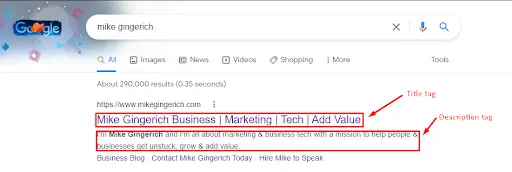
Dropshipping service and POD (print on demand) business model have been a great match to each other. The number of people engaging in this industry has been rising forever. Try typing “personalized shirt” into Google search bar and you will receive about 549,000,000 results within 0.64 seconds. That’s just way too much competition! The question here is how to make your store stand out and attract customers?
Many POD sellers spend tons of money on ads to boost their website visibility. This method may work for some, but may not for others. There is another way to advertise your business without having to invest so much into ads. It is called SEO.
What is SEO?
SEO, in short for search engine optimization, indicates a number of various techniques which share the same goal: to make your website come out at the top position of Google search result’s first page. It means whenever a web user searches for a query related to your business, your website appears as the first result. That is a lot of visibility. SEO helps you do that without having to invest too much financially. However, it is a long-term journey that requires dedication and effort to be able to see the desired result at the end.
In this article, we will discuss a few eCommerce SEO tips on how to make your POD business rise above others in the search ranking.
Keyword research
To carry out keyword research before launching marketing is a must to any business owner out there, no matter what kind of marketing method it is. It goes the same for an SEO campaign.
Know your niche
A niche is a term that indicates a product or a topic that is popular among a particular segment of customers. Print-on-demand business owners must decide their target niche first and foremost.
While doing SEO, you should focus on keywords that are relevant to your niche. Those are often the sub-niches of your main niche. For example, if your niche is about fitness and a healthy lifestyle, then you should keep an eye on terms like “bodybuilding”, “how to lose weight”, “personal trainer”, etc.
When choosing your niche, there are a lot of factors that come into play. A well-chosen niche is normally the combination of something that you are interested in and something trendy on the market. Other factors like location could also affect your decision significantly. For example, a Hawaiian shirt probably won’t sell so well in a country where it is mostly cold all year round like Canada or Russia.
Know your tools (Pinterest, Etsy,…)
There are a ton of free tools out there that help you with your keyword research. Those include Google Keyword Planner, KWFinder, etc. These are the very popular and trustworthy tools that give you the insights you need about your keywords.
However, print-on-demand businesses can upgrade their keyword game to the next level by incorporating platforms like Pinterest or Etsy into their research. These “tools” may give you more than what you expect from your keyword if exploited correctly, rather than just numbers and statistics like the aforementioned tools.
Pinterest is a social media network that focuses on image sharing. This is where a lot of images related to POD trends are posted. You can see for yourself which niche is trendy at the moment by checking out the number of saves, repin, or likes of each image. Although Pinterest does not show these stats, all you need to do is to install a plugin called OpenPin Pro and you will be able to check those out. Pinterest is also a huge source where you can learn about design styles from the images posted, which helps a lot in your idea creation process.

Etsy, on the other hand, is an eCommerce platform that focuses on handmade and craft items. A lot of POD sellers operate on this website also. This is where you can find idea references and directly spy on your opponents by checking out their stores, their best-selling products, etc.
Website optimization
Website optimization is an on-page SEO method that includes various steps. The ultimate goal is to improve users’ experience while using your website, thus improving your rank in Google search results. Here are the steps that everybody must do to achieve that SEO effect mentioned above.
Meta tags optimization
Meta tags are pieces of information among many that tell search engines and users what your page is about. Now, meta tags include both title tags and description tags. This is how they look when your page is displayed in Google search results.

Title tag also appears as your browser tab name.

So basically speaking, your meta tags are the very first piece of information of your page that users interact with. Well-written meta tags convince users to visit your website and help Google understand your page better. If you leave these tags untouched, Google will auto-generate them for you based on the data it collects from your website. And trust me when I say they look bizarre.
For these tags, you should provide the most basic information about your page. For the homepage, the most common formula people use is [Your brand name] + [Keywords describing your business]. On the other hand, your title for product pages should include your product name at the beginning, and your brand name at the end. Pay attention to the length as well, since Google only displays the first 50 – 60 characters of your title tags. Anything longer than that will be truncated, which is no good.
About the description tag, try to write a brief introduction about what your page is about. Your description does not necessarily have to be in sentence format, as long as it is understandable to users and search engines. You should limit it to around 160 – 200 characters. Try to insert keywords appropriately for the best SEO effect. If you stuff your description with keywords without a care in the world, it will backfire and your page is not likely to be seen anywhere on the search results. Google considers keyword stuffing as a black-hat SEO technique and it won’t show any mercy for such acts.
Write informative product description
Print on demand dropshipping stores don’t generally include much text in their websites since most content is in image form. The product descriptions are where the most text comes from, so you should put some effort into this to make sure that your website content does not stray too far from the text-visual balance.
An informative product description tells your customers what they need to know about the product before making the purchase decision. If it is not well written, customers are not likely to buy because they don’t feel convinced enough.
To start with, your description must include the specifications of the product. It is what customers want to know first and foremost. However, many sellers stop immediately after this because they think it is enough. While it may be true, you can always put a bit more effort to get the best out of it. If product descriptions contain specifications only, then every description would look the same and boring. You would want to turn each of them into a unique one since Google highly appreciates unique content.
Try to educate your customers by providing a small piece of information about the product’s design, or probably just a sentence saying how this shirt would make you shine on the street! It shouldn’t take too much of your time but in return, give you the unexpected result.
Image optimization
As stated above, most of a print on demand store’s content is in an image. Therefore print on demand sellers must put a lot of effort into image optimization.
The first thing you should do is add ALT tags to your images. An ALT tag tells Google what your image is about. It also helps visually impaired people to read your website better by interacting with the screen recorder. In short, ALT tags include short descriptions of your images. You should insert keywords into your ALT tags as well. It benefits you just as much as incorporating keywords into your text content by signaling Google that your page is a good source for that keyword.
The second thing you want to look at is your image quality. Of course, you don’t want to make your product images look blurry. Low-quality product images are a big red flag that tells customers to buy from other stores instead of yours. To display images in high quality with high resolution, you can seek online tools or store plugins that offer auto-optimization features for your photos. They should take you no more than just a click to get this done.
You should also consider creating your own mockup images for more unique content. Many POD sellers crawl existing mockups online which often come in low quality. To prevent them from using your mockups, you can insert a watermark into your photos.
However, you should also pay attention to your images’ file sizes. The higher the quality, the heavier the images are. According to HTTP Archive in 2018, images take up 21% of a website’s total weight. Therefore, it affects your page load speed significantly. Google sees page speed as a direct ranking factor, so you would want your web pages to load as fast as possible. While there are many things that can be done to improve your page speed, reducing images’ weight also helps a lot. You should try to balance between an image’s quality and its file size to get the best out of your visual content.
Page speed optimization for Mobile
According to Statista, mobile eCommerce sales figure has increased significantly to take up 72.9% of the total eCommerce sales. It means that three out of four online purchases are done on a mobile device. It indicates that eCommerce sellers, in general, shall optimize their users’ experience on mobile, not to mention the fact that Google ranks mobile-friendly websites higher.
A user’s experience of your website is significantly affected by your page load speed. Besides image optimization as listed above, we want to introduce a few other ways to make your pages load faster:
Minify code resources (HTML, CSS, JavaScript)
Reduce file size by compression
Disable unused addons
Enable Browser caching
While implementing these techniques, remember to incorporate tools like Google PageSpeed Insights to measure and analyze the impacts made to your website speed. PageSpeed Insights is a free online tool that provides you with statistics related to SEO issues. On the other hand, the tool also gives analysis based on a user’s point of view.
Print on demand sellers can also seek service apps or plugins that help simplify all the SEO techniques to save time and effort. ECommerce website building services like Shopify or Magento offer a wide range of applications that help smoothen your SEO campaign by a mile. If you happen to be a Shopify seller, check out this SEO Booster app from Secomapp.
Conclusion
SEO has proven itself to be a great customer acquisition tool. However, sellers need to equip themselves with the knowledge to carry out SEO correctly. Patience is also a required caliber while doing SEO since you won’t see the result you expect in just a few days. It takes time.
If you know any other exclusive SEO tips that work great for print on demand businesses, feel free to share them with us in the comment section below.
The post SEO Strategy For Print On Demand Stores appeared first on Mike Gingerich.
Read more: mikegingerich.com









